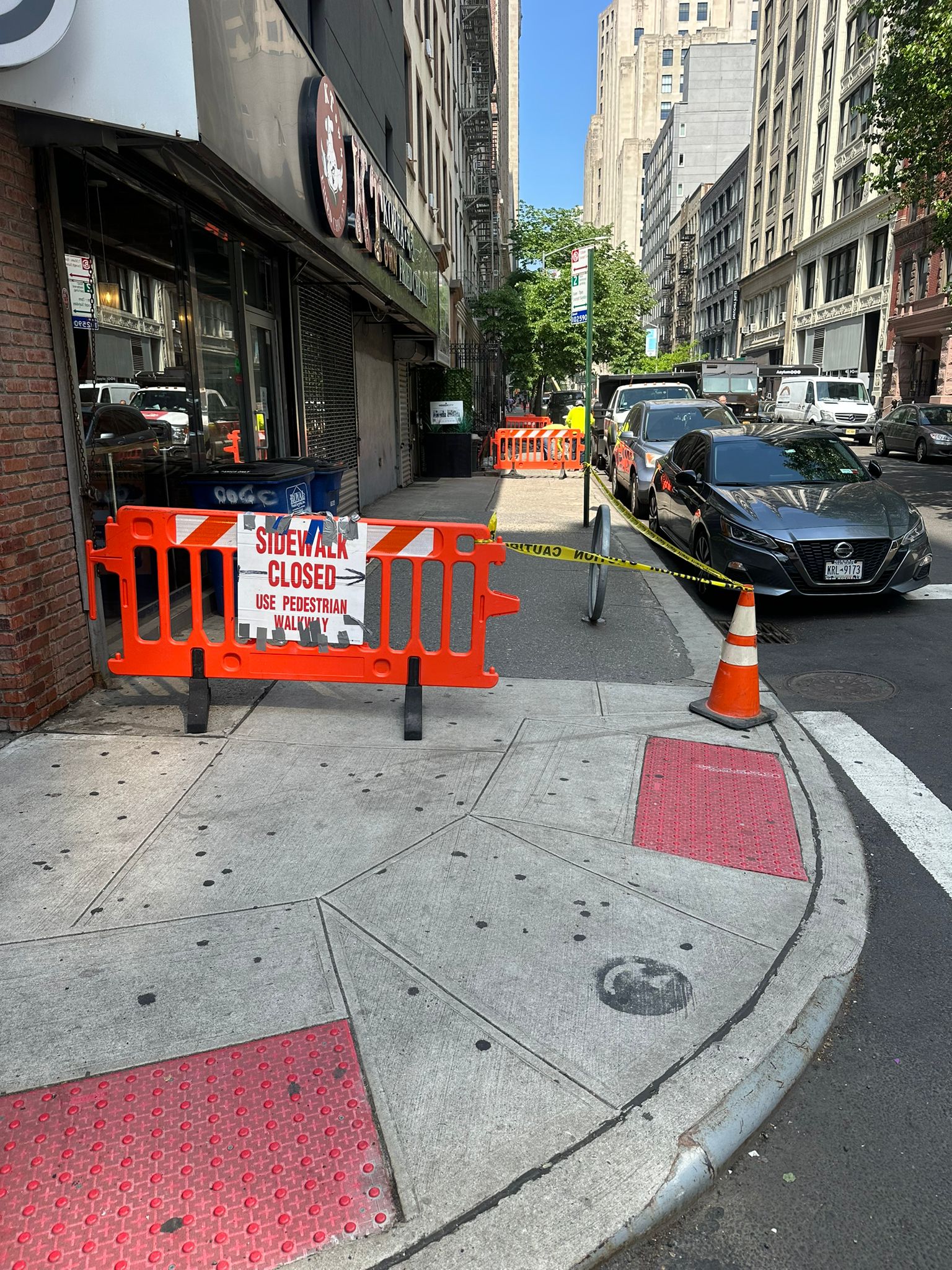
New York City’s bustling streets are a constant hum of activity, pedestrians weaving their way past iconic landmarks and towering skyscrapers. But beneath the vibrant energy lies a crucial element – the city’s sidewalks. Millions of feet traverse these concrete paths daily, and their upkeep is essential for pedestrian safety. However, the question of who foots the bill for sidewalk repair in NYC can be a bit of a maze.
Property Owner Responsibility: The General Rule
In most cases, the responsibility for sidewalk repair in New York City falls on the shoulders of the property owner. This is dictated by Section 19-152 of the New York City’s Administrative Code, which states that property owners are liable for “installing, repairing and maintaining sidewalks adjoining their properties.” This includes keeping the sidewalks free of cracks, holes, and uneven surfaces that could pose a tripping hazard.
Exceptions to the Rule: When the City Steps In
There are a few exceptions where property owners might get a break on sidewalk repair costs. Here’s a breakdown of the scenarios:
-
Trees & Sidewalks Program: NYC Parks offers a program specifically for one, two, and three-family homes (tax class 1) that are not used commercially and are owner-occupied. This program addresses severe sidewalk damage caused by tree root growth. However, funding is limited, and repairs are prioritized based on a rating system considering the damage severity, pedestrian traffic, and the tree’s condition.
-
City-Owned Property and Residential Neighborhoods: The Department of Transportation (DOT) shoulders the responsibility for sidewalk repairs on city-owned property. Additionally, the DOT often takes the initiative to repair sidewalks in residential areas with a predominance of one, two, and three-family homes.
-
Curb Repair Contracts: In some instances, the DOT might undertake curb repairs at no cost to the property owner, particularly when the work coincides with sidewalk repairs related to a violation or an active curb repair contract.
The Financial Burden of Repairs
If the sidewalk damage on your property doesn’t fall under any of the exceptions, you’ll be responsible for the repair costs. These can vary depending on the severity of the damage, the size of the area needing repair, and the materials used. Obtaining quotes from licensed contractors is crucial before embarking on the project.
The Sidewalk Repair Process for Property Owners
For property owners facing sidewalk repairs, here’s a general roadmap:
-
Report the Damage: Property owners are obligated to report damaged sidewalks to the Department of Transportation (DOT) by calling 311 or submitting a request online.
-
Inspection and Violation: The DOT will inspect the reported damage and may issue a violation notice if repairs are deemed necessary. The notice will outline the specific repairs required and a deadline for completion.
-
Hiring a Contractor: Property owners are responsible for hiring a licensed contractor to complete the repairs according to the DOT specifications. Obtaining multiple quotes and checking references is recommended.
-
Permits and Inspections: Before starting work, you’ll need to obtain the necessary permits from the DOT. Once the repairs are complete, a DOT inspector will visit the site to ensure compliance.
-
Possible Reimbursement for Tree Damage (Limited Cases): If you believe the sidewalk damage was caused by a city tree, you can file a claim with the NYC Comptroller’s Office within 90 days of completing the repairs. However, keep in mind that filing a claim doesn’t guarantee reimbursement.
Financial Assistance Options
While the financial responsibility for sidewalk repairs generally falls on property owners, there are limited options for assistance:
-
Sidewalk Repair Payment Plan: The Department of Finance offers a payment plan for qualifying properties. This applies to one to six-family homes or properties with an assessed value of $30,000 or less. The original repair charges must be over $250 but under $5,000 to be eligible.
Sharing the Responsibility: A Complex Landscape
The sidewalk repair landscape in NYC can be complex, with property owners shouldering most of the responsibility. While programs like the Trees & Sidewalks Program offer some relief in specific cases, the city also takes initiative in repairs on its own property and certain residential areas. Ultimately, maintaining safe and accessible sidewalks is a shared responsibility between property owners and the city.
Additional Considerations
-
Preventative Maintenance: Regular sidewalk inspections and addressing minor cracks or unevenness early on can prevent the need for costly repairs later.
-
Understanding Your Rights and Responsibilities: Familiarizing yourself with the relevant NYC regulations and programs regarding sidewalk repair can help you navigate the process effectively.
Community Engagement: Advocating for increased city funding for sidewalk repairs, particularly in areas with a high concentration of low





